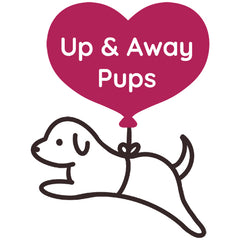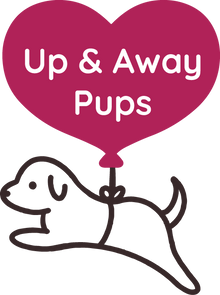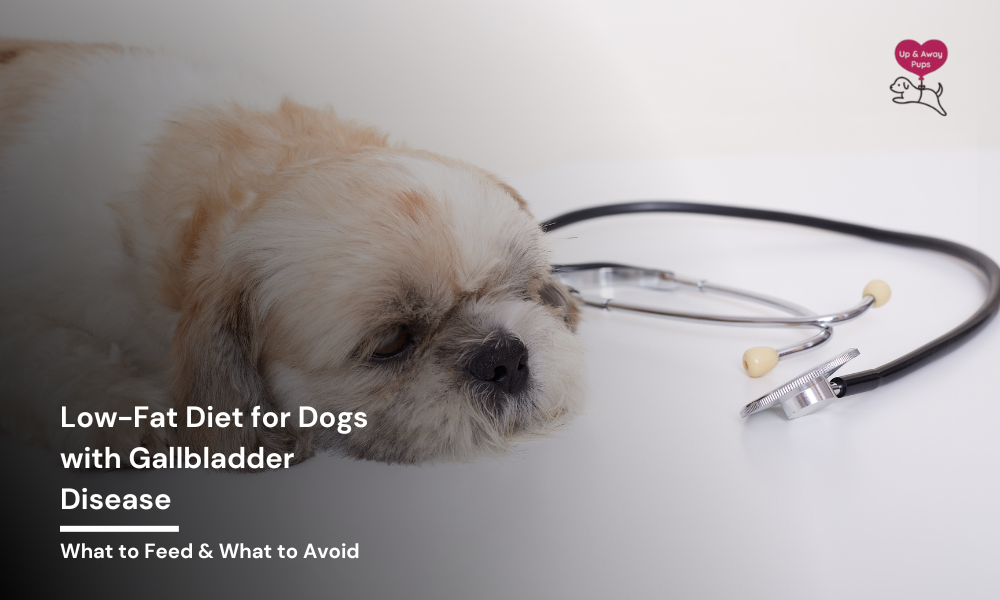Low-Fat Diet for Dogs with Gallbladder Disease: What to Feed & What to Avoid
Managing your dog's gallbladder disease requires a well-planned low-fat diet to reduce strain on the gallbladder. Lean proteins, digestible carbohydrates, and fiber-rich vegetables help support digestion, while fatty and processed foods should be avoided. Transitioning gradually and monitoring your dog's response is key. Supplements like omega-3s and probiotics may provide additional benefits. Always consult your vet before making dietary changes to ensure your dog gets the right nutrition for a healthy, comfortable life.
We won’t sugarcoat it. Managing your canine friend’s gallbladder disease isn’t the easiest task, and consistency is often the biggest issue. It requires carefully planning their diet to reduce stress on the gallbladder. A low-fat diet can make a big difference. In this blog post, we’ll cover everything you need to do to best manage your dog’s gallbladder disease, including what to feed, what to avoid, and how to keep your pup happy and healthy.
Understanding Gallbladder Disease in Dogs
First, let’s understand what the gallbladder does. It is a small organ that stores bile produced by the liver, which is released into the small intestine to help digest fats further. When the gallbladder isn’t working as it should, usually due to gallbladder disease such as cholecystitis or gallstones, bile flow can be obstructed, leading to digestive issues, inflammation, or even blockages in the bile ducts.
Dogs with gallbladder disease might show symptoms such as vomiting, loss of appetite, and even jaundice, where the eyes or skin take on a yellow tint. It’s tough to see your furry friend uncomfortable, but the right diet can help ease their discomfort.
Why a Low-Fat Diet Helps
As we discussed above, the gallbladder is in charge of storing the bile that helps digest fats. Now, if a dog’s gallbladder is already weak, ingesting more fatty foods would just make things worse. It will struggle to release enough bile to break down the fats, leading to a worsening of the condition.
That is why a low-fat diet is recommended for dogs with gallbladder disease, as it reduces the strain on the gallbladder and the liver. See, it isn’t about cutting out all fats. Healthy fats are still vital for maintaining energy levels and overall health, but it is about finding the right balance.
Ideally, go with foods that contain 10-15% fat or less. This makes sources of lean protein like chicken, turkey, and fish excellent choices. Fortunately, dogs absolutely gobble those up. Avoid fatty meats, cheese, and commercial treats, as they are high in fat.
Recommended Foods for Dogs with Gallbladder Disease
Here’s a list of dog-friendly, low-fat foods that are gentle on the gallbladder. However, remember that every case is unique, and this list is by no means a replacement for a visit to the vet. It is best to visit your trusted vet, and they will develop a diet plan for your furry baby based on their unique condition and requirements. However, this list works as a general guideline:
Lean Proteins
Lean proteins for the win! Not only are they easier to digest, but dogs absolutely love them. These include skinless chicken, turkey, and fish like salmon and sardines.
Digestible Carbohydrates
Easily digestible carbohydrates like rice and sweet potatoes provide much-needed energy without stressing the digestive system.
Fiber-Rich Foods and Vegetables
Fiber is fantastic for digestion and promotes regular bowel movements. That is why salads are recommended for us humans when we are feeling under the weather. For your dog, include brown rice, oatmeal, and sweet potatoes along with a variety of vegetables like carrots, broccoli, and spinach. These are low in calories and high in vitamins, providing essential nutrients and antioxidants.

Supplements
While it is best to keep things all-natural, maintaining a very specific diet can be taxing, both in terms of time and finances. Consider adding omega-3 fatty acids from fish oil to support overall health and reduce inflammation. Probiotics can also promote healthy gut bacteria and balance digestion. However, once again, it is best to consult a veterinarian before introducing any supplements.
Commercial Low-Fat Dog Food Options
The difficulty of maintaining a specific diet is a real problem, and many pet owners struggle with it. Thankfully, there are commercial dog foods made specifically for dogs with digestive issues, including gallbladder disease. You can take guidance from your veterinarian on which brands to choose, but brands like Hill’s Prescription Diet and Royal Canin Gastrointestinal Low Fat are often recommended as the best options.
Foods to Avoid
Some foods are best avoided. Think of these as chocolate for a dog with gallbladder disease. These include:
High-Fat Foods: Needless to say, high-fat food will only exacerbate their gallstone condition.
Spicy Foods: This may not be obvious, but seasonings and spices like peppers, chili powder, and hot sauces can irritate the gallbladder and worsen inflammation. Many pet parents never give their dogs seasoning to begin with, so this doesn’t come up as much, but it should still be avoided.
Processed Foods: The problem with processed food is that it is heavy on additives, preservatives, and artificial ingredients that can be hard to digest and put a strain on the gallbladder. It is best to stay away from these unless they are specifically made for dogs with digestive issues.
Also, if you haven’t already, it is time for some portion control. Dogs love eating, but they often don’t know when to stop. Large meals can overwhelm an already weak digestive system, so offer smaller, more frequent meals to ease the workload.
Tips for Transitioning to a Low-Fat Diet
Our furry friends, even the genius breeds like Poodles, don’t truly understand the concept of dieting or medicine. And it is hard to get angry at a face like that of a Bichon Frise. So, when switching your dog’s diet, remember that it will take time, especially if you have been spoiling them with richer foods. Take things easy. Gradually mix the new low-fat food with their current diet over seven to ten days and serve it to them in smaller portions three to four times a day.
Monitor how they respond to it. Do they notice the difference? Keep an eye on their energy levels, appetite, and stool quality. If something seems off, check with your vet. Lastly, make sure they have access to fresh water at all times.
Conclusion
With love, care, and some knowledge about what to do, managing your dog’s gallbladder disease becomes possible. Feed them a low-fat diet with lean proteins, digestible carbohydrates, and fiber-rich vegetables while avoiding high-fat and processed ingredients. However, before making any changes, consult your veterinarian to ensure your dog gets the nutrition they need. With the right approach, your dog can lead a happy, comfortable life despite gallbladder disease.
FAQs
Can a dog recover from gallbladder disease with diet alone?
In some cases, dietary management can significantly improve symptoms and prevent complications, but some dogs may still require medication or even surgery.
Is a homemade diet better than commercial low-fat dog food?
That greatly depends. A homemade diet allows pet parents to have much more control over the ingredients they add, but they must know how to balance them properly. Ideally, it should include lean proteins, digestible carbohydrates, fiber-rich vegetables, and essential vitamins and minerals. Avoid fatty meats like beef, lamb, and pork, as well as organ meats, which are high in cholesterol. At the risk of sounding like a broken record, consult a vet beforehand.
What if my dog refuses to eat the new food?
Try warming the food slightly or adding a small amount of low-sodium broth to make it more appealing.


